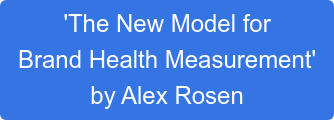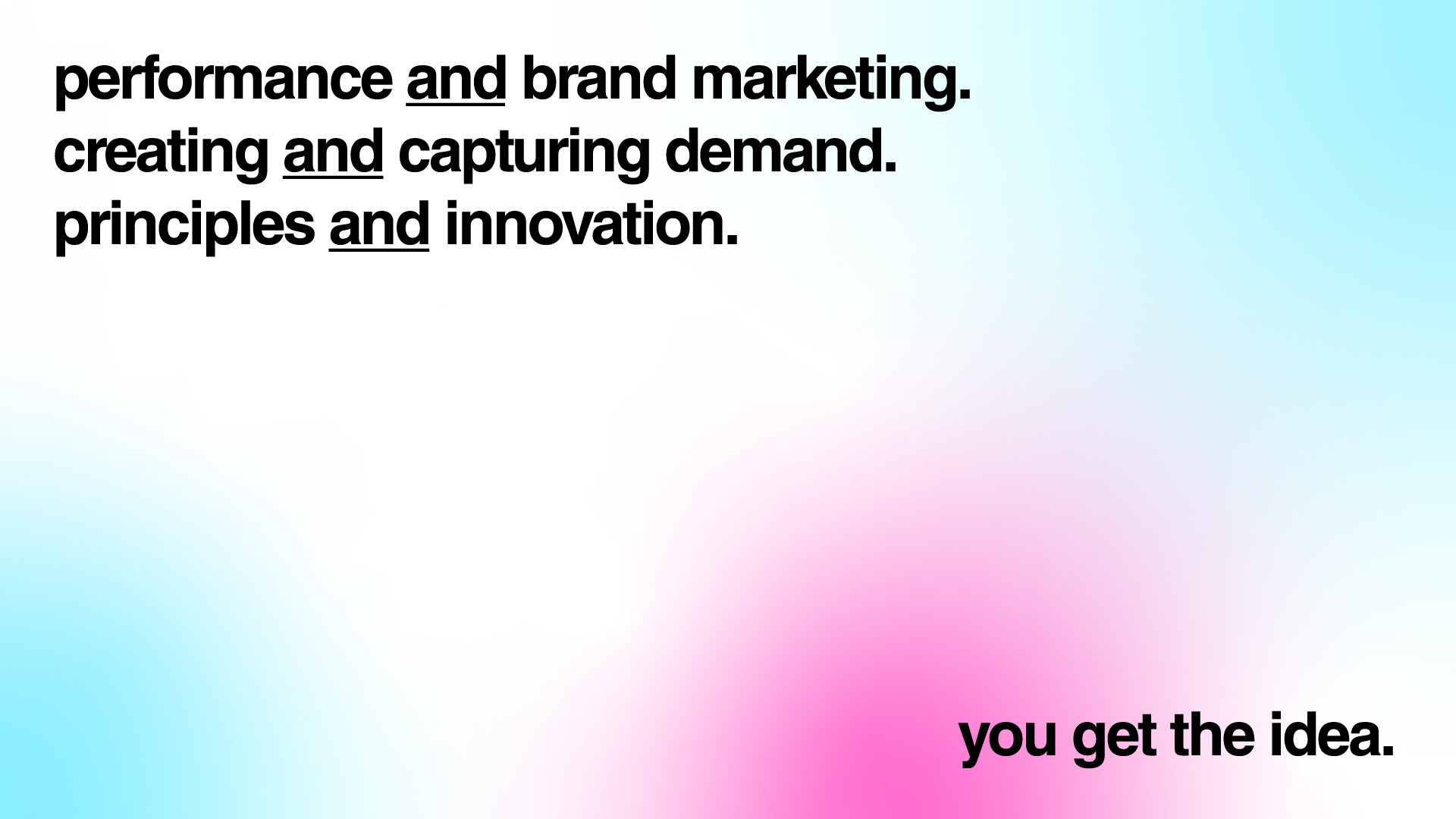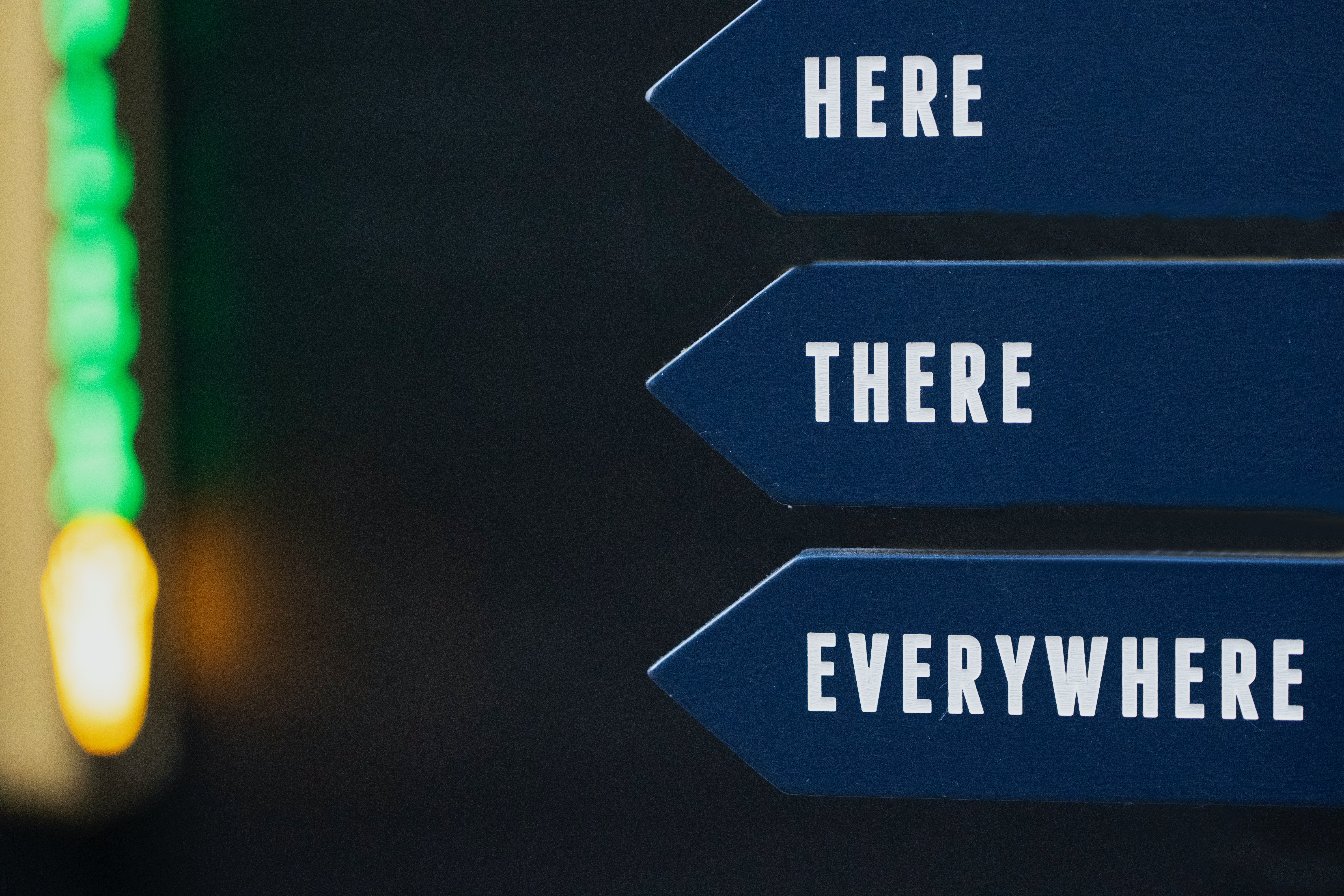The evolution of brand building & measurement
4 minute read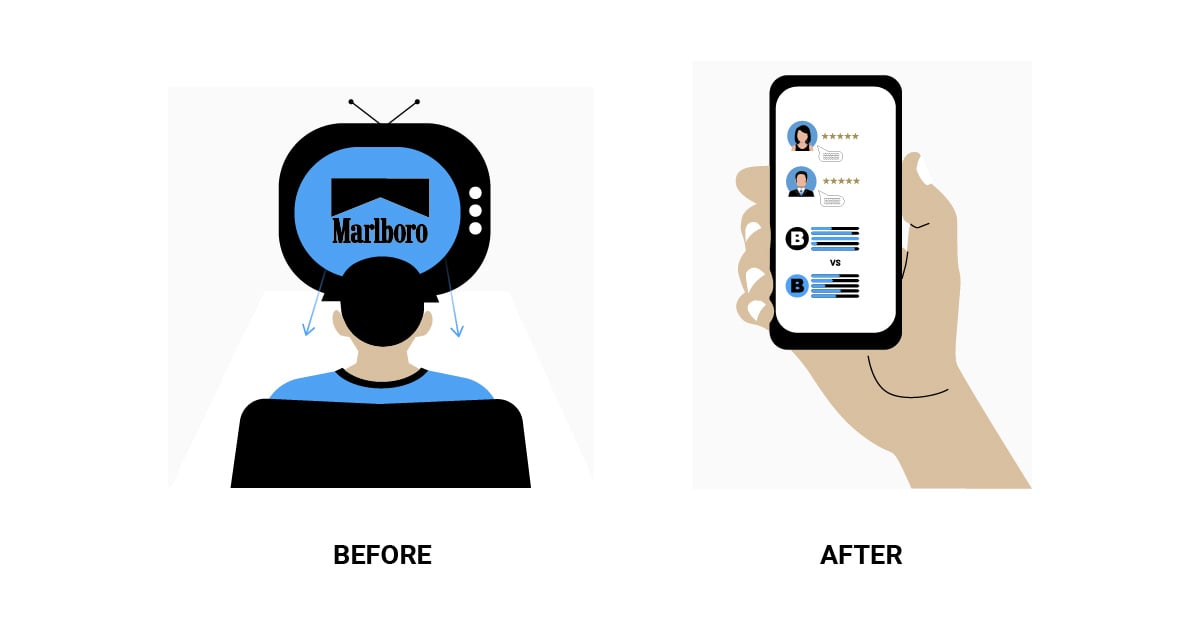
The rise of the internet has transformed marketing. The internet shifted the power from brands to buyers, lowered the barriers to entry, and escalated the competition. Despite the abundant possibilities it opened for brands, marketers find that winning the category has become much more challenging.
Even though the evolution of our industry is a commonly discussed topic, what rarely gets mentioned in this discussion is how drastically brand building & brand measurement have changed. This blog post will provide you with insights needed to
help your brand adapt to this transformation and reach its growth potential.
Brand building implications: then vs now
THEN: Brand growth was determined by advertising spend.
Brand-building was once a pursuit exclusive to only a handful of brands, which made their returns greater than those of today. This was because startup costs were very high, and the only notable players in the market were brands that existed as extensions of global conglomerates. As such, they had budgets nobody could compete with. TV advertising was one of the primary brand-building methods with the broadest reach potential. The high advertising costs (TV, billboards, radio...) meant consumers' attention was fixed on a small number of brands that we were able to afford it.
The competition for market share during this period came down to advertising spending, therefore brands with the biggest budgets were typically predetermined winners. Growing brand awareness was imperative because buyers had limited information to make the optimal purchase decision. Their main source of information about the brand came from the brand itself, more specifically,
its TV and radio commercials.
NOW: No single success formula.
Winning the category requires brands to be more deliberate with their strategic choices and excel across all marketing functions, rather than merely outspending the competition on advertising. This is caused by the power consumers have gotten with the rise of the internet, but also the power the competitors now have. Unlike the brand building of the old, such a large number of fragmented
channels and possibilities available to consumers and competitors alike make it nearly impossible for brands to
find a single success formula.
Consumers can now explore thousands of alternative brands on their desktop or mobile devices. Rather than getting their information from advertising, consumers can now read online reviews, compare brands in real-time, consult other buyers, and more. There are fewer "winner takes all" categories, as winning the category comes down to marginal superiorities. The leading brands find their place at the top isn't as secure as it might have been in the years past. This reality forces brands to push the envelope if they aspire
to win the category.
Brand presence: then and now
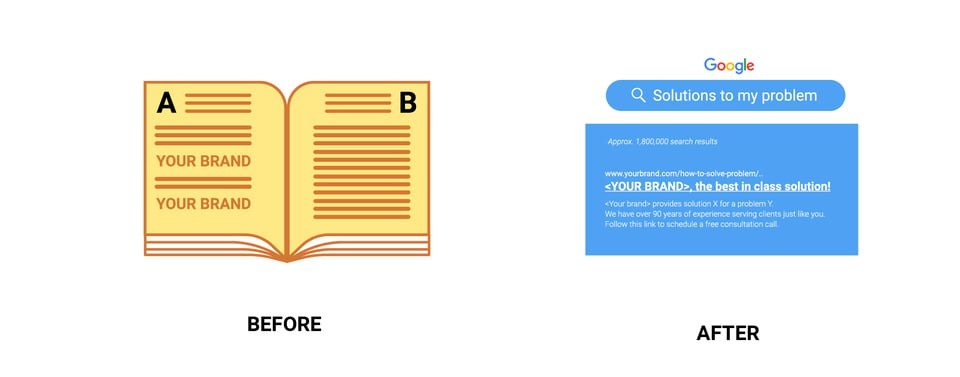
Brand KPIs & measurement: then vs now
THEN: Brand growth was measurable in hindsight
Brand building used to prioritize maximizing Share of Voice (via ads). Brands with the highest SoV were the category leaders because roads to brand growth were predominantly centered around TV and radio advertising. The key brand metrics were brand awareness, interest, and preference. Marketers relied on surveys to measure those metrics. Such static metrics made sense at the time because the competitive environment was relatively stable, and since the consumer's buying choices were determined by their exposure to a handful of brands over a long period of time, brands thrived by maximizing those metrics. Achieving this often required years and even decades of brand-building efforts. Brands that managed to maximize these metrics became hard to displace in their respective categories. Many brands have retained their leadership status to this day (such as Nike and Marlboro).
NOW: Brand growth & measurement are visible in real-time
The fast-paced competitive environment shaped by the rise of the internet has forced brands to focus on achieving excess Share of Everything; in other words, achieving presence across the entire purchase path. Fixed long-term brand growth strategies are now less effective because they can now be easily disrupted by competitors in the short term. This incentivizes continuous marketing improvement and ensures that the best brands emerge as leaders. Brand metrics optimized for this reality are brand presence, attention, reputation, and momentum.
Unlike the old brand metrics that were based on the cumulative effects of decade-long advertising efforts, the new brand metrics are powered by automated data collection which shows your real-time brand performance across all channels. This provides marketers with insights needed to quickly adapt their brand-building efforts to the changing competitive reality. Improvements to brand health are now visible and expected in the short term, in addition to the long term. The traditional practice of conducting yearly or quarterly brand surveys is now ineffective, as the survey data becomes outdated by the time it reaches the marketing organization. This is what makes brand & category intelligence platforms like BrandOps that use an automated collection of data, rather than conducting surveys,
crucial for modern-day brand building.
Brand reputation: then and now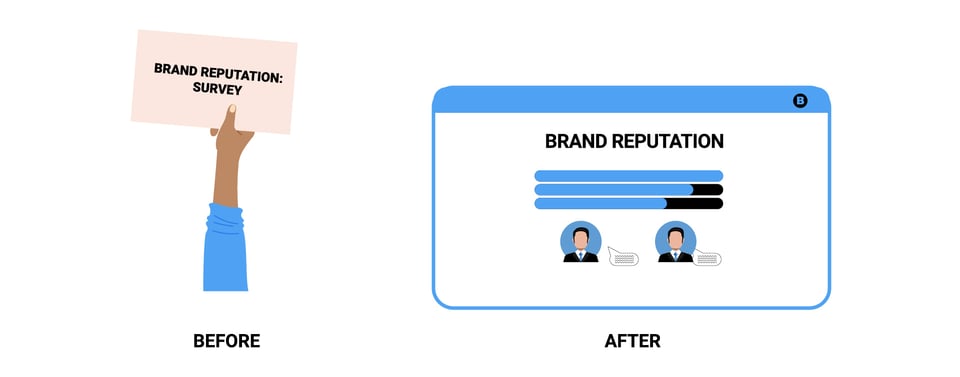
Brand building ingredients & stakeholders: then vs now
THEN: Only brand managers were responsible for the brand
Brand managers, with the help of external agencies, were the main stakeholders responsible for maintaining brand integrity across all company marketing initiatives and communications. They conducted surveys across the market to inform brand growth strategies, and were tasked to share these insights with the rest of the marketing organization. Not only was the accumulation of brand intelligence largely limited to them, but the meaning of the data was also left for the brand manager's personal interpretation. It wasn't uncommon for brand strategies to be rooted in intuition, rather than insight. The brand was thought of as a guarantor of quality. To communicate this to consumers, marketers used advertising as one of the key ingredients in their brand-building arsenal;
not only as a tool for building brand awareness but also as a quality signaling device.
NOW: Everybody owns the brand
Everybody in the marketing organization is now responsible for improving the brand's health - rather than the brand being a duty of a sole department. More emphasis is placed on the brand providing a cohesive, ongoing experience across channels at all times. Brands now use digital channels to be more present in the consumer's everyday life and unlike brand advertising in the 1950s, rather than trying to persuade people to buy, brands provide consumers with ongoing value in form of education or entertainment.
Lastly, marketing organizations are now equipped with advanced data and technology that have become irreplaceable tools for growing brands. More stakeholders are involved in the brand growth process than ever before, as getting the most value from the aforementioned advanced data and technologies often requires experts from outside the marketing industry to join the process.
Brand attention: then and now
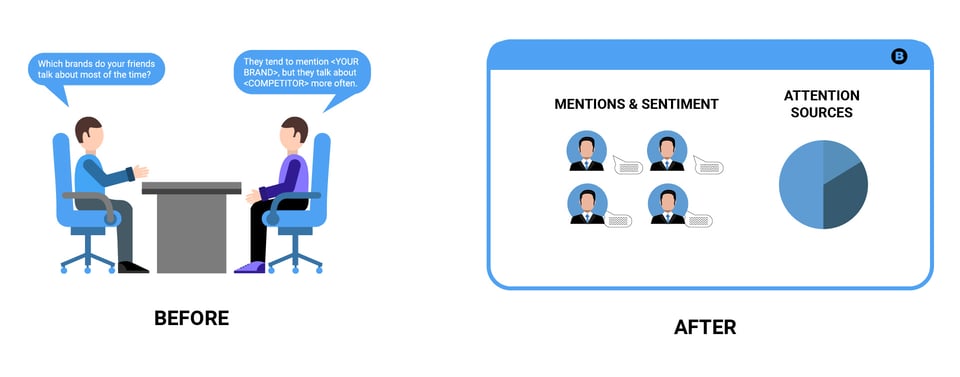
Brand momentum: then and now
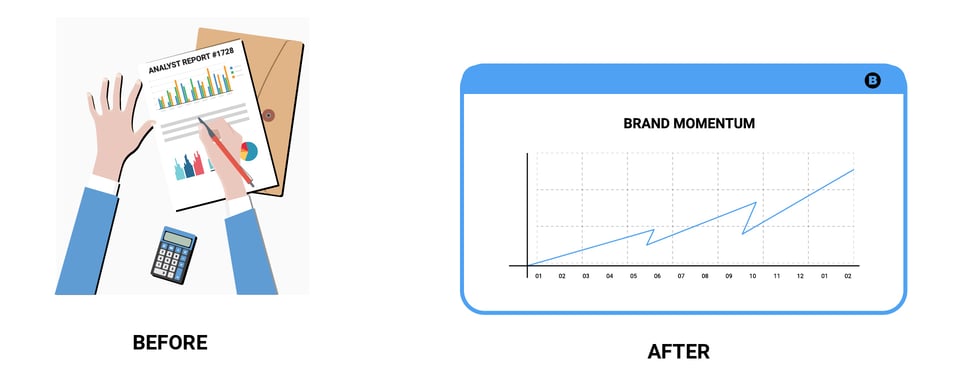
The conclusion
Unless already established, brands are no longer getting optimal growth from fixed long-term strategies. Instead, brands must supplement the long term with the wins they achieve across all channels, every day. Achieving this requires flexibility supported by ongoing insights. Above all else, adapting to this new reality of brand building & measurement requires cultural transformations of marketing organizations, but it doesn't have to be overwhelming. Every change starts with a small step: a single marketer's contribution to this transformation is unlearning the fundamental assumptions of what brand building is, and how brands are measured in 2022.
It is time to accept the knowledge we inherited from successful brands of the old days, sadly, no longer serve us well.
BrandOps is proud to be at the forefront of modern-day brand intelligence.
If you wish to learn about a new way to measure your brand & optimize it for growth, schedule a BrandOps tour.


